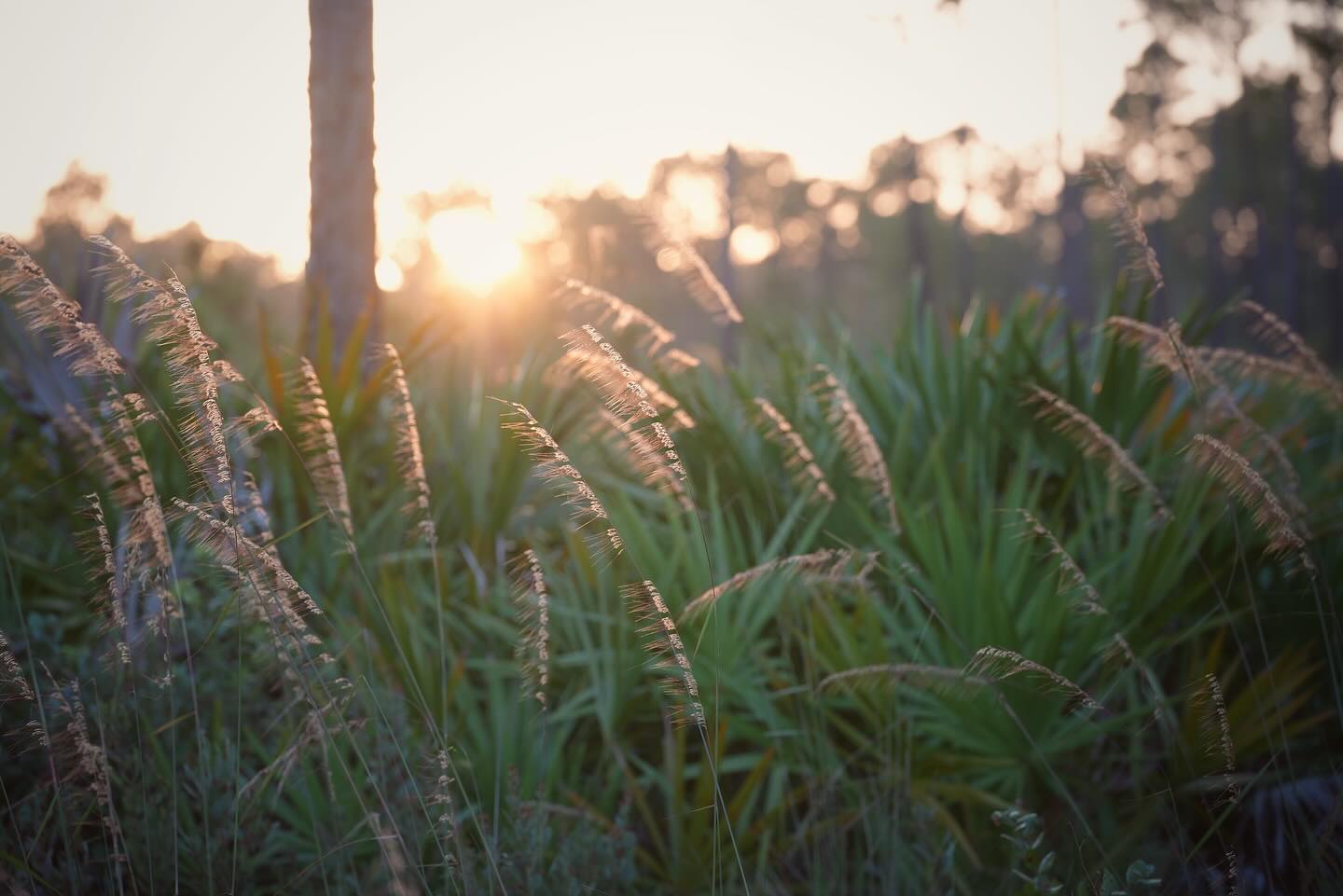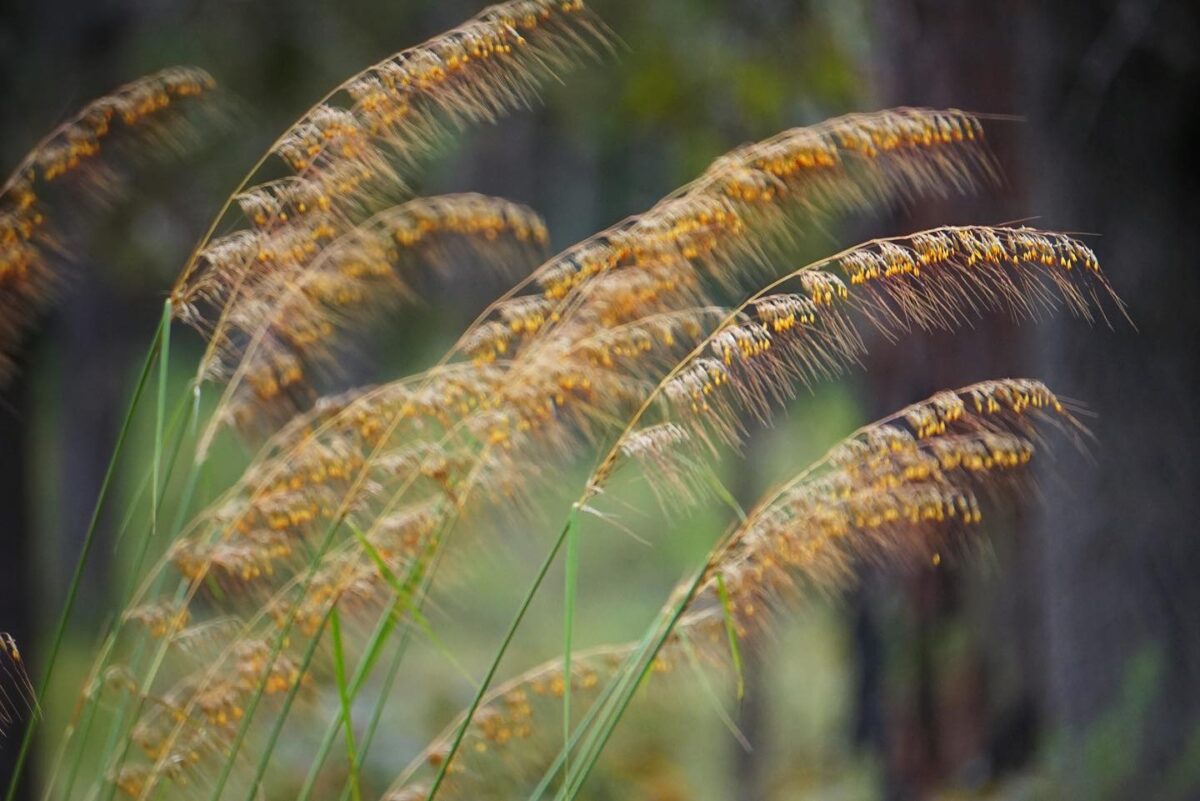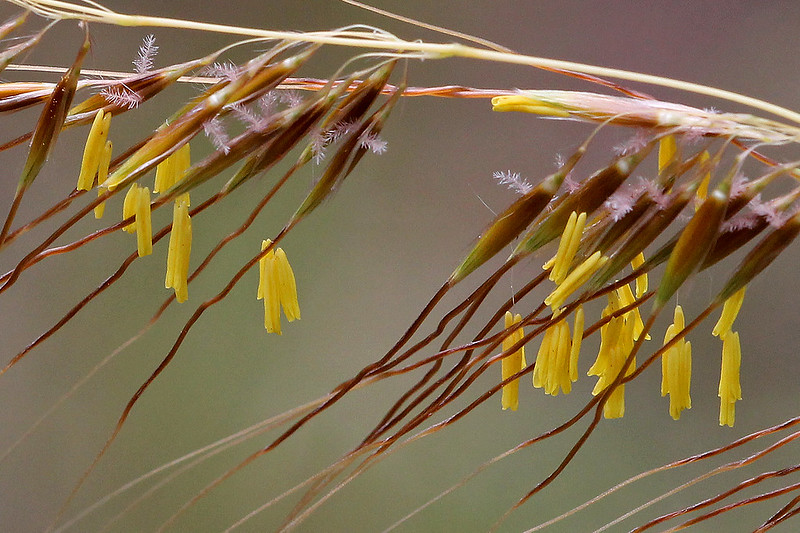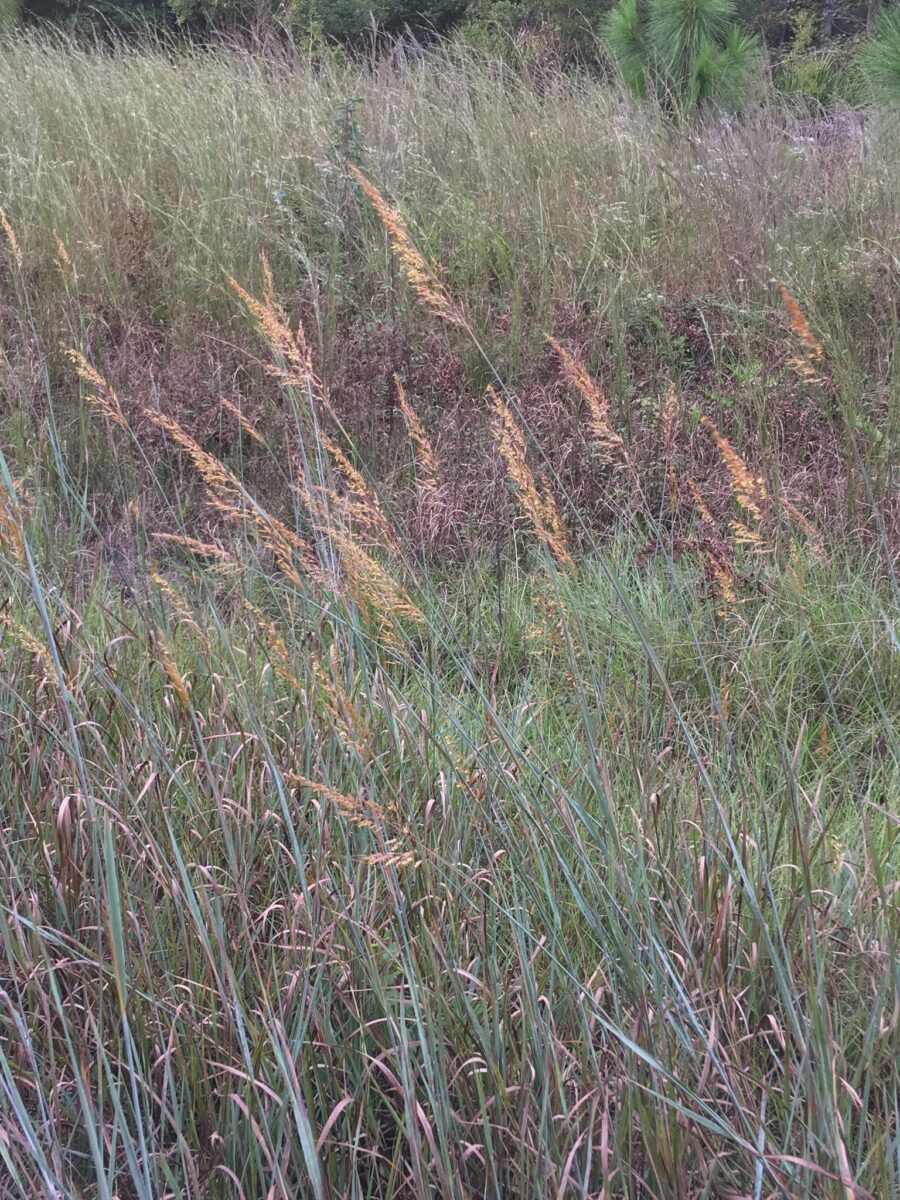Lopsided indiangrass
Pictured above: Lopsided indiangrass (Sorghastrum secundum) by Emily Bell. Click on terms for botanical definitions. View post as a PDF.
Lopsided indiangrass (Sorghastrum secundum) is a robust and unique perennial bunchgrass. It occurs naturally in pinelands, sandhills and flatwoods, and typically blooms in late summer through fall. It is the larval host plant for the Delaware skipper, Dusted skipper and Swarthy skipper.
Throughout most of the year, Lopsided indiangrass is rather indistinct. But in late summer, it produces tall, dramatic flower spikes. Each tiny flower is wrapped in bracts that are covered in soft, bronze to brown hairs, and bears a long, twisted, reddish-brown awn and bright yellow anthers. When lit by the sun, the colorful flowerheads flicker and flash. The entire inflorescence occurs on one side of the rachis, hence the common descriptor “lopsided.” Leaves are dark green with long, tapering blades up to 18 inches long. Leaf sheaths are covered in fine hairs.
The genus name Sorghastrum literally translates to “poor imitation of Sorghum.” It is a combination of the genus Sorghum and the Latin suffix –astrum, meaning “expressing incomplete resemblance.” The species epithet secundum is from the Latin secundus, meaning “following,” “next” or (loosely) “in a row” and refers to the formation of flowers on one side of the rachis.
Family: Poaceae (Grass family)
Native range: Mostly throughout Florida
To see where natural populations of Lopsided indiangrass have been vouchered, visit florida.plantatlas.usf.edu.
Lifespan: Perennial
Soil: Moist to dry, well-drained soils
Exposure: Full sun to minimal shade
Growth habit: 2–3′ feet; up to 6′ tall when flowering
Propagation: Seed, division
Florida regions of landscape suitability: North, Central, South
Garden tips: Despite its height, Lopsided indiangrass does not generally obscure other plants. It makes a beautiful addition to naturalistic landscapes, wildflower gardens, or mixed meadows with other bunchgrasses and wildflowers. It also can be planted in small masses. Consider locating the plants where the sun will backlight the flowering stems.
Lopsided indiangrass is often available at nurseries that specialize in Florida native plants. Visit PlantRealFlorida.org to find a nursery in your area.
Learn more about Lopsided indiangrass from the Florida Native Plant Society and the Institute for Regional Conservation.
For information on other Sorghastrum species, see these resources:




